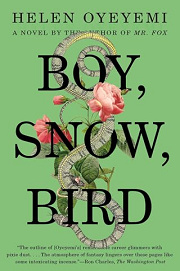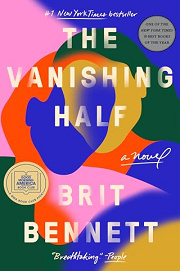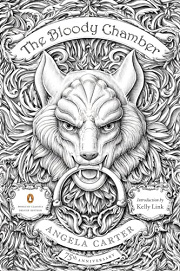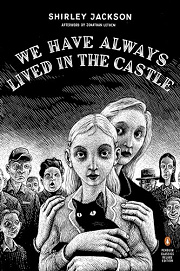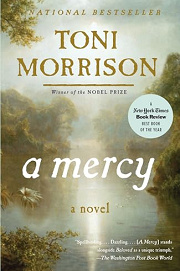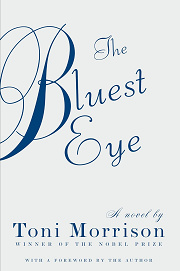Share your thoughts in a quick Shelf Talk!
Boy, Snow, Bird by Helen Oyeyemi
A new stepmother in a 1950s town confronts beauty, identity, and the secrets families hide, as a familiar fairytale casts a long and unsettling shadow. Luminous and surprising, Boy, Snow, Bird reframes the mirror to reveal what we choose not to see.
Have you read this book? Share what you liked (or didn’t), and we’ll use your answers to recommend your next favorite read!
Love Boy, Snow, Bird but not sure what to read next?
These picks are popular with readers who enjoyed this book. Complete a quick Shelf Talk to get recommendations made just for you! Warning: possible spoilers for Boy, Snow, Bird below.
In Boy, Snow, Bird, did you enjoy ...
... the intergenerational exploration of racial passing and mother–daughter estrangement?
The Vanishing Half by Brit Bennett
If what hooked you in Boy, Snow, Bird was watching Boy send Snow away after Bird’s complexion reveals the Whitmans’ secret—and the way that decision reverberates through daughters and mothers—then The Vanishing Half will land perfectly. Bennett follows twin sisters who split when one chooses to pass as white, echoing the Whitmans’ hidden lineage and the shape-shifting self-invention that haunts Boy, Bird, and Snow. The novel’s daughters, like Bird piecing together her family’s truth, sift through lies, silences, and reinventions to claim who they are.
... a sharp, feminist refashioning of fairy tales into something uncanny and modern?
The Bloody Chamber by Angela Carter
You liked how Boy, Snow, Bird braided the Snow White myth—mirrors, stepmothers, and all—into 1950s Massachusetts, turning a fairy tale inside out to probe race and beauty. Carter does that alchemy across multiple tales in The Bloody Chamber. If the way Boy reframed the “evil stepmother” role and interrogated who gets called “fairest” thrilled you, Carter’s lush, subversive retellings will scratch that same itch, pushing familiar stories into dangerous, revealing territory.
... intense, unsettling interiority within a claustrophobic family drama?
We Have Always Lived in the Castle by Shirley Jackson
If you were drawn to the unsettling psychology of Boy—her prickly self-protection after the rat-catcher’s abuse, her fraught fixation on Snow, and the late reveal about Frank/Frances that upends everything—you’ll love Jackson’s eerie deep-dive into Merricat and Constance Blackwood. Like the Whitman household after Snow’s exile, the Blackwood home is a sealed world of rituals, rumors, and guilt, with a narrator whose mind keeps you deliciously off-balance.
... shifting, interlocking voices that reveal a family’s buried truths?
A Mercy by Toni Morrison
If the alternating voices of Boy and Bird—each reframing the Whitman family’s history from her angle—pulled you in, A Mercy offers a similarly rich chorus. Morrison moves between characters whose personal accounts dovetail and clash, much like how Boy’s rationale for sending Snow away collides with Bird’s discoveries. As in the Whitmans’ story, fragments of testimony accumulate until the hidden architecture of race, love, and survival comes into view.
... a piercing examination of beauty, mirrors, and the violence of the "fairest" ideal?
The Bluest Eye by Toni Morrison
If the mirror motif in Boy, Snow, Bird—the corrosive power of “fairest,” Snow’s idealization, and Bird’s confrontation with colorism—stayed with you, The Bluest Eye goes straight to the root. Morrison turns the mirror on a community shaped by white beauty standards, much like the Whitmans’ obsession with appearance. The result echoes Boy’s realization that the story of who is “fairest” is a spell cast by culture—one that warps mothers, daughters, and the ways they see themselves.
Unlock your personalized book recommendations! Just take a quick Shelf Talk for Boy, Snow, Bird by Helen Oyeyemi. It’s only a few questions and takes less than a minute.
